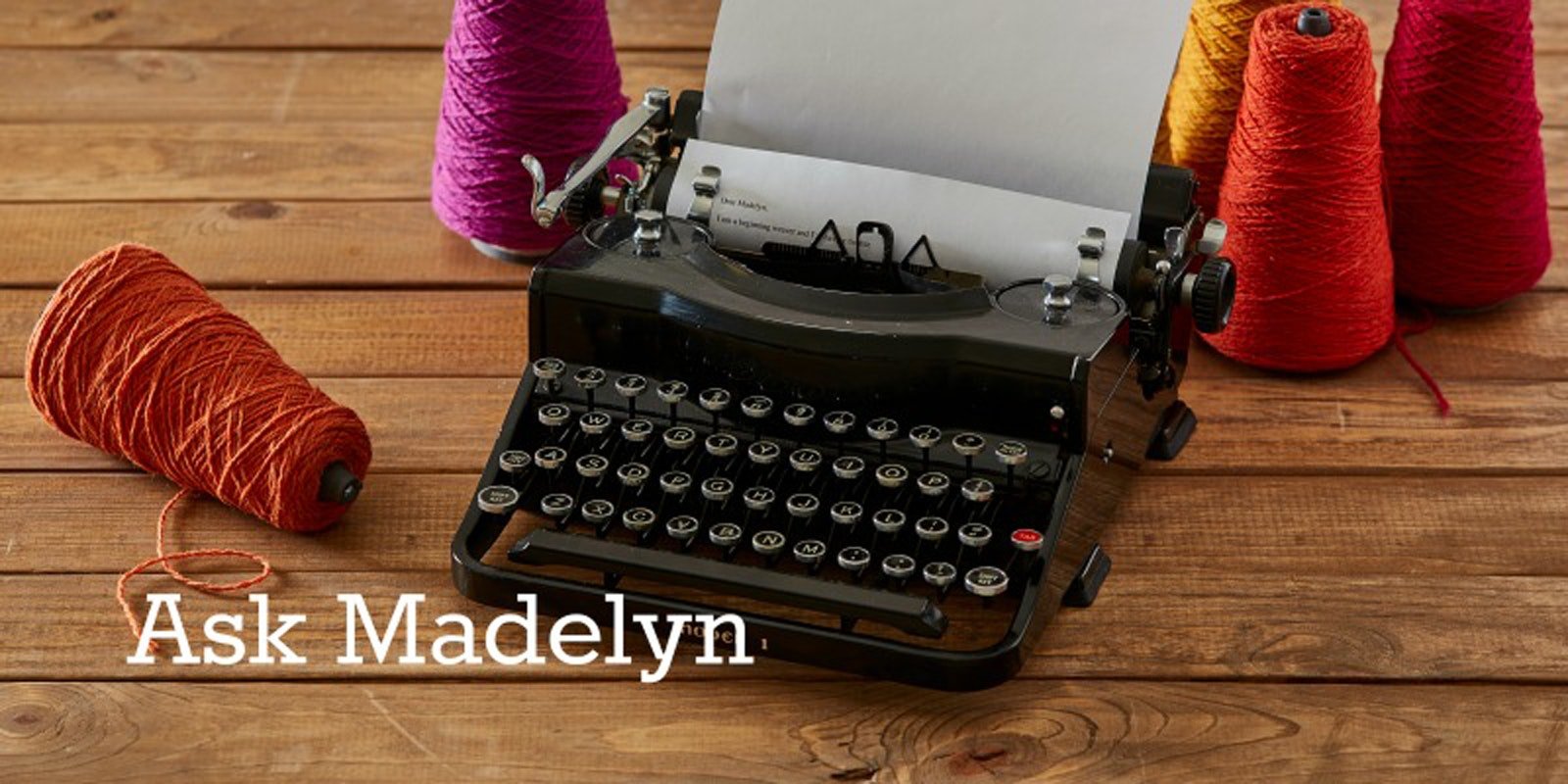If I want to weave a structure such as overshot, summer and winter, or a lace weave double wide for a tablecloth, what problems can I expect? I have just given away my large floor loom and will be using a 36” table loom for this. Many thanks for your consideration,
– Dianne
Hi Dianne!
When you weave something "double wide," you weave it in two layers on the loom. The weft goes through one shed in the top layer (with the bottom layer down), then through one shed in the bottom layer (with the top layer raised), then back through the next shed in the bottom layer (with the top layer raised), and then through the next shed in the top layer (with the bottom layer down), back to the weft's starting position. These four sheds will constitute two actual picks of weft, there will be two selvedge edges on the side where the weft started and a fold on the opposite edge.
To do this, several factors must be considered. Your loom must have twice as many shafts as would be required for a single layer in your chosen weave structure. The warp will be twice as dense as it is for a single layer, which will mean that your beat will need to have much greater force to achieve the same weft sett as for a single layer. For that reason, with a table loom, I'd try your first project in a lace weave. The beat that will be necessary to beat in the pattern and tabby wefts of an overshot or summer and winter, is likely to be beyond the capacity of a table loom. In addition, since you can't really see what the weft is doing in the bottom layer, errors with the pattern weft in the bottom layer may be hard to detect. You'll be able to judge how difficult these weaves may be if you try lace first. Remember, though, that a narrow sample won't give you that information. The wider something is, the more force the beater will have to exert to achieve the same weft sett.
—Madelyn
If you have a weaving question please email Madelyn! View related & recent "Ask Madelyn" posts! Posted May 9, 2012. Updated April 1, 2019.

